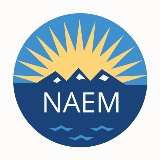How Small Steps for Engagement Become Giant Steps for EHS at Toyota

Green Tie (GT): Can you briefly describe how Toyota approaches employee engagement?
Ryan McMullan (RM): A lot of people first expect when they look at the Toyota Way that it's all about improvement projects to get efficiency. While it's true that you may initially you have the EHS specialist coming up with the ideas for projects, we all know that one person cannot do it all and so really what you need is engagement. You do not get engagement, however, by talking about engagement. You get engagement by demonstrating respect and sincerity and that you really want employee's input.
GT: So even though it's a classic chicken-egg scenario are there ways to jump into the cycle midstream and make it seem somewhat linear?
RM: Sure, let's use a concrete example we have from our safety program. One corporate EHS-initiated program was to create separate facility pathways for pedestrians and powered equipment. To do so, we built guarded paths with railings and gates so that it's very clear where pedestrians are supposed to be walking.
As a corporate, top-down program, this was not the type of thing that would generate much engagement, but in one of our facilities, an associate said, 'You know, some of these gates require a push to get into the pedestrian area, and other require a pull. We could really use a green sign that says push and a red sign that says pull.'
To an outside observer that may seem like a small risk that will have a minimal impact on safety. If you follow this train of thought, you might say, 'I know it is a problem, but you will get used to it and you will learn which ones are push and pull, so do not worry about it.' The other approach, however, is to ask whether this suggestion might be an opportunity to build engagement. In this scenario, you might say, 'I like that you are thinking about improving our safety, and I would like you to design the sign and tell me where should it be posted. I am going to allocate hours in your week towards improving this conditions in our facility.' Although it may not have been a huge safety concern, it is opportunity to build engagement and to build relationships.
GT: And so by acknowledging and supporting their initiative that becomes a building block for that safety culture.
RM: Yes. What you are doing is building a habit inside of them, rewarding their thinking about their own safety and how to improve it. By structuring the improvements in a way that is asking them to come up with a solution you are developing them, you are developing their skills and mitigating EHS hazards. And in this case, the hazards that they are mitigating might be very small, but you have got to have your eyes on the final prize of a fully engaged workforce - and one who has developed the skills of mitigating EHS hazards.
GT: So when you kind of multiply that small behavior interaction across the entire workforce, you actually achieve measurable outcomes?
RM: Right. You can imagine if there is one project and you handle it with that long-term goal in mind. You improved the engagement and skillset of one associate, and you have a hundred in your facility you are going to need to do that a lot. But, after a while they are going to start talking to each other and say, 'You know what? When I go to EHS they listen to me and so if you have an idea too you should go to them because they actually care about us.' If you have a hundred associates in your facility, it is not like you have to repeat this process a hundred times, there is kind of multiplier effect to it.
GT: Because it is more about changing the process or the behavior or the mindset, do you have a way of measuring what effect it has?
RM: We have all the traditional ways of measuring the outcomes, with the very end result being not only how many injuries and illnesses we get, but also how many near-misses and how many safety concerns are being reported.
What we found is that there is kind of a three-stage process to building engagement:
In the first stage, when you start demonstrating that you serious about this and you care about people, building that engagement, your recorded incidents may go up because you are starting to capture things that maybe happened before, but were not reported.
In your second stage, your reported near-misses and safety concerns go up. Now people are not only remembering to talk to you when they actually get injured - even if it is just a minor cut or first aid injury - now they are telling you when something nearly happens, or even better than that, when they see a hazard and identify it before anybody even nearly gets hurt.
And then the third stage is that your incidents, injuries, and illnesses actually go down.
Related
Sponsored Content
About the Author

NAEM Staff
The National Association for Environmental, Health and Safety, and Sustainability (EHS&S) Management (NAEM) empowers corporate leaders to advance environmental stewardship, create safe and healthy workplaces and promote global sustainability. As the
leading business community for EHS&S decision-makers, we provide engaging forums, a curated network, peer benchmarking, research insights and tools for solving today’s corporate EHS&S management challenges. Visit us online at naem.org.

